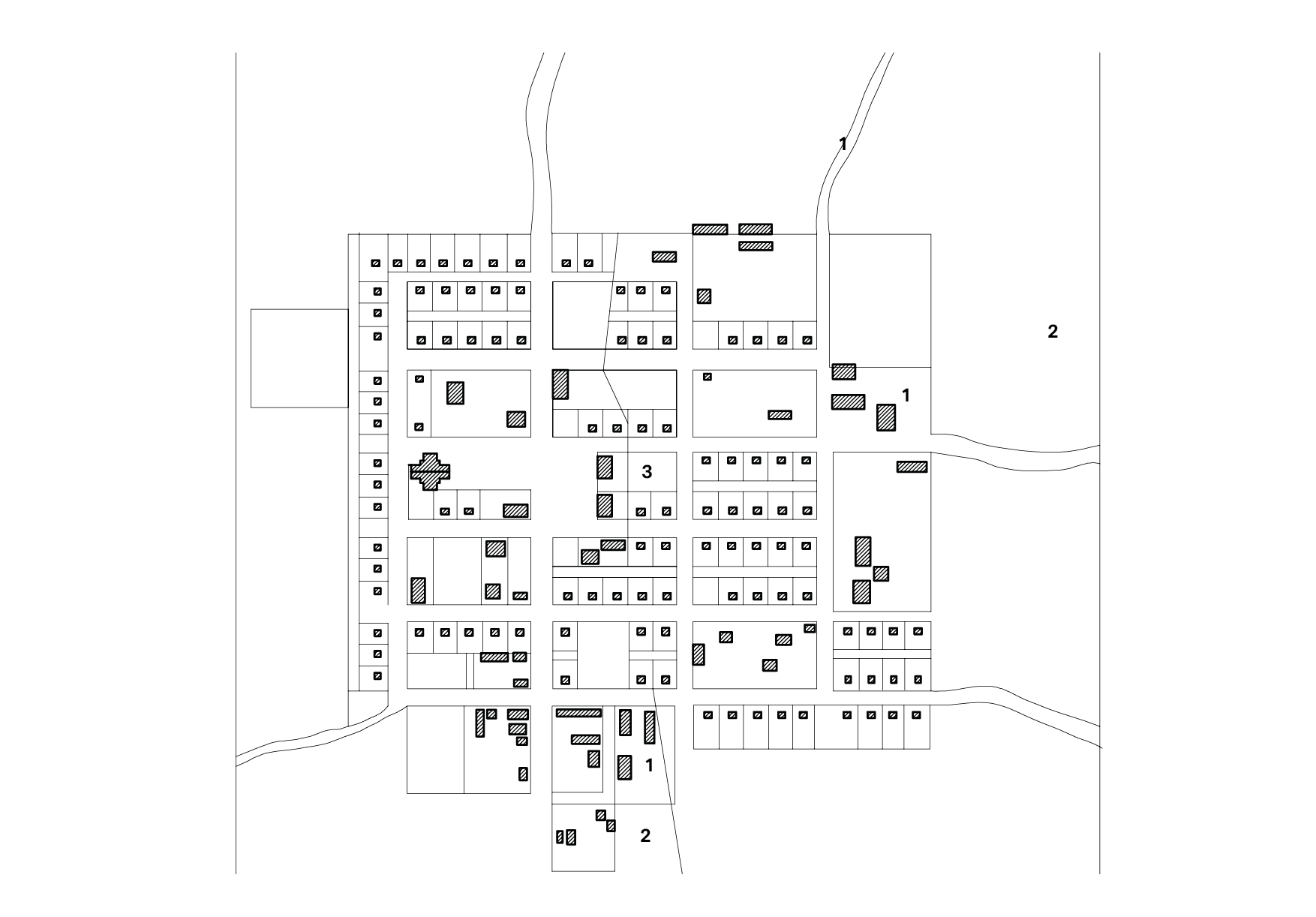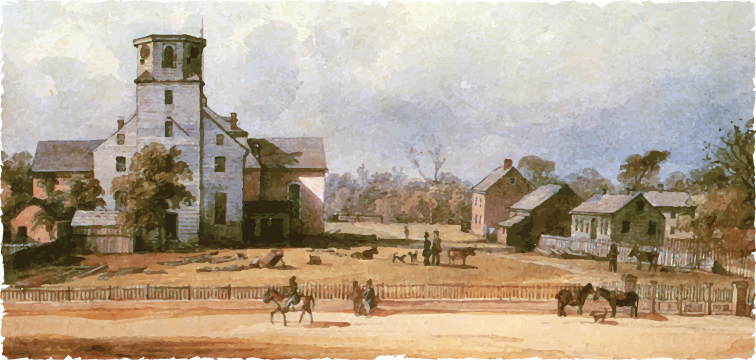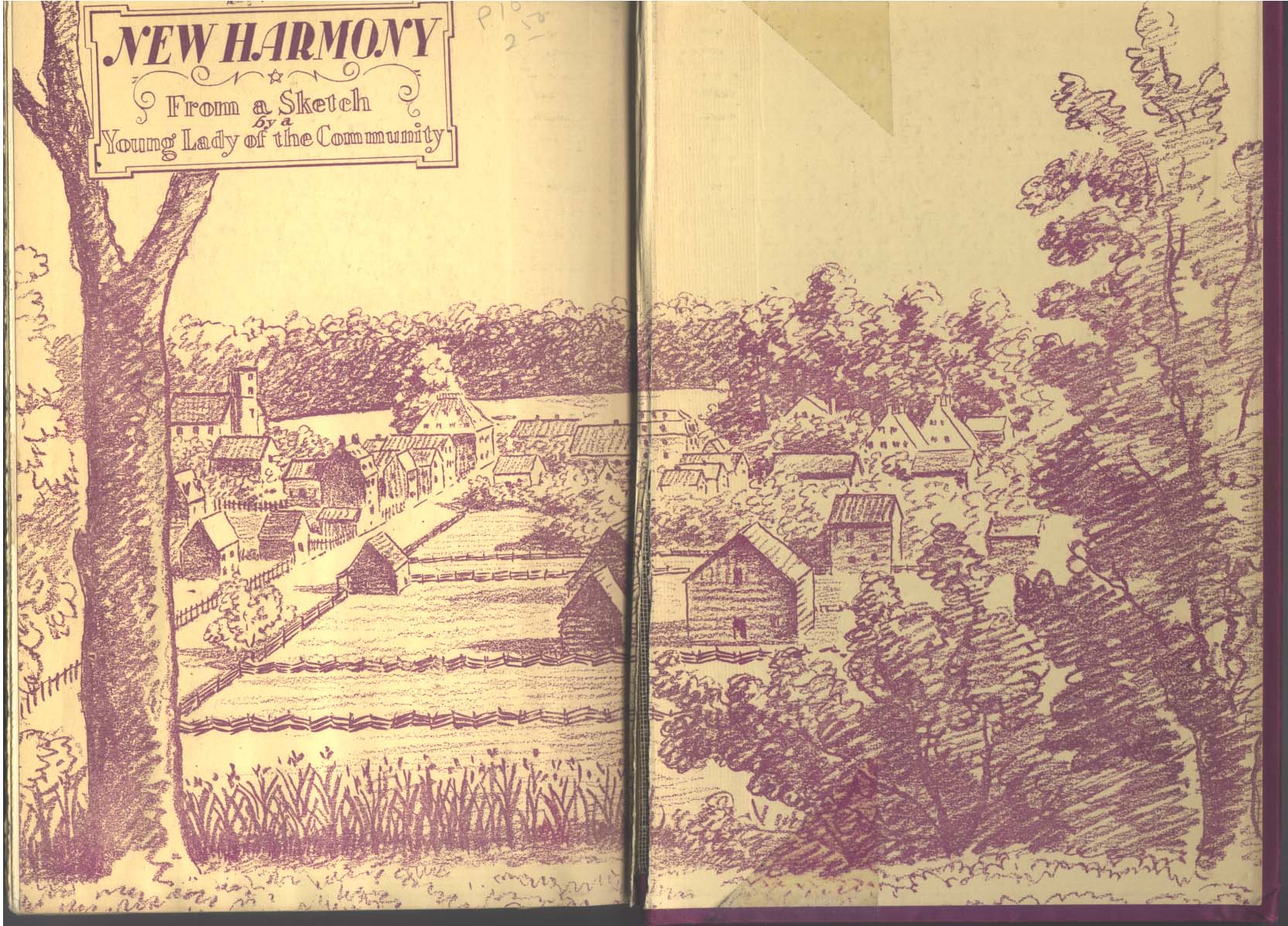New Harmony (Real)
![]()
New Harmony, Indiana, USA
Owenites, Utopian Socialists
Single-Family Housing
Co-op
1825-1826

New Harmony, Indiana, USA
Owenites, Utopian Socialists
Single-Family Housing
Co-op
1825-1826
1 Workshops 2 Farms 3 School / Meeting House
![]()
The built reality of New Harmony bore little resemblance to Owen and Whitewell’s plan. Owen acquired a ready-made community from the Rappites, whose well-built but simple structures helped make the community a short-term success. He purchased 20,000 acres of land for $125,000. 180 log, frame, and brick structures, public buildings, manufacturing establishments, shops, and housing for about 700 people, 2000 acres of farm land.
New Harmony grew quickly to 1,000 and the workshops (1) and farms (2) worked well. A school (3) for community’s 140 children was founded and the social life of the community flourished. In February 1826 the ‘New Harmony Community of Equality’ was established, proclaiming in its constitution “Our object is that of all sentient beings, happiness.” Owen saw New Harmony as a demonstration project, and was convinced it’s ideals would spread ‘from community to community, from State to State, from Continent to Continent.” He set high principles—equality for all men, community of property, freedom of speech and action, etc. but the community’s lack of practical rules and organization, and skills led to the community’s collapse

The built reality of New Harmony bore little resemblance to Owen and Whitewell’s plan. Owen acquired a ready-made community from the Rappites, whose well-built but simple structures helped make the community a short-term success. He purchased 20,000 acres of land for $125,000. 180 log, frame, and brick structures, public buildings, manufacturing establishments, shops, and housing for about 700 people, 2000 acres of farm land.
New Harmony grew quickly to 1,000 and the workshops (1) and farms (2) worked well. A school (3) for community’s 140 children was founded and the social life of the community flourished. In February 1826 the ‘New Harmony Community of Equality’ was established, proclaiming in its constitution “Our object is that of all sentient beings, happiness.” Owen saw New Harmony as a demonstration project, and was convinced it’s ideals would spread ‘from community to community, from State to State, from Continent to Continent.” He set high principles—equality for all men, community of property, freedom of speech and action, etc. but the community’s lack of practical rules and organization, and skills led to the community’s collapse


Carmony, Donald F., and Josephine M. Elliott. “New Harmony, Indiana: Robert Owen’s Seedbed for Utopia.” Indiana Magazine of History 76, no. 3 (1980): 161–261. http://www.jstor.org/stable/27790455. Page 162.
Carmony, Donald F., and Josephine M. Elliott. “New Harmony, Indiana: Robert Owen’s Seedbed for Utopia.” Indiana Magazine of History 76, no. 3 (1980): 161–261. http://www.jstor.org/stable/27790455
Ibid, 166
Carmony, Donald F., and Josephine M. Elliott. “New Harmony, Indiana: Robert Owen’s Seedbed for Utopia.” Indiana Magazine of History 76, no. 3 (1980): 163. http://www.jstor.org/stable/27790455